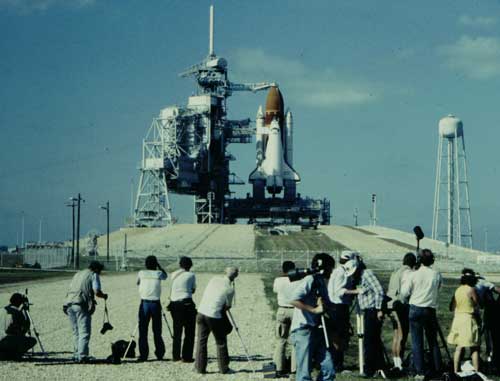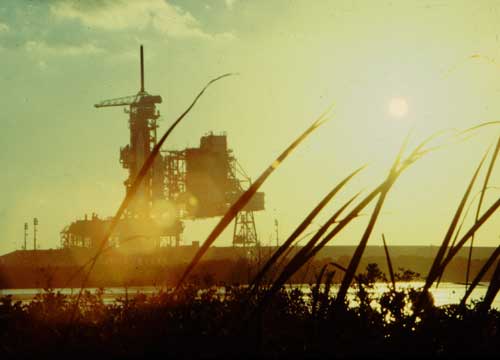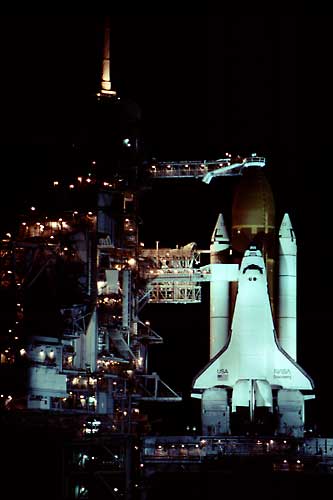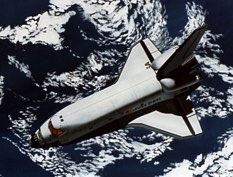

RSS Rollout: The Rotating Service Structure (RSS) is scheduled to be opened the afternoon before the launch. Seen at close range, the RSS is an enormous tangle of pipes, struts, and pylons...no more meaningful or attractive than an oil refinery. But the huge RSS has a trick that refineries can't match. Imperceptibly at first, it pivots open along a gigantic hinge. Discovery is gradually revealed. It is gleaming white, totally flawless, utterly pristine. Seen face on, the elegance of the entire Shuttle stack...Orbiter, External Tank, and Solid Rocket Boosters...is overpowering. This is a little-realized advantage of aerodynamic spacecraft...beauty becomes a necessity, not a frivolous option.
Sunset: Hundreds of photographers, representatives of the world press corps, pile out of NASA buses. I, in my reporter disguise, am among them. Before us lies the narrow Mosquito Lagoon, bright with flashes of the setting sun, dotted with wading birds and waterfowl. Across the water, Discovery sits at Launch Pad 39-B. The sun's slanting descent is bringing it to a rendezvous with Discovery. It touches the horizon. Shutters click more frequently when flocks of wild birds pass in front of the waiting spacecraft. Their cries and the surf behind us provide the only other sounds. From this viewpoint, Kennedy Space Center looks primordial, untouched...except for the spacecraft silhouetted incongruously against the golden horizon.










